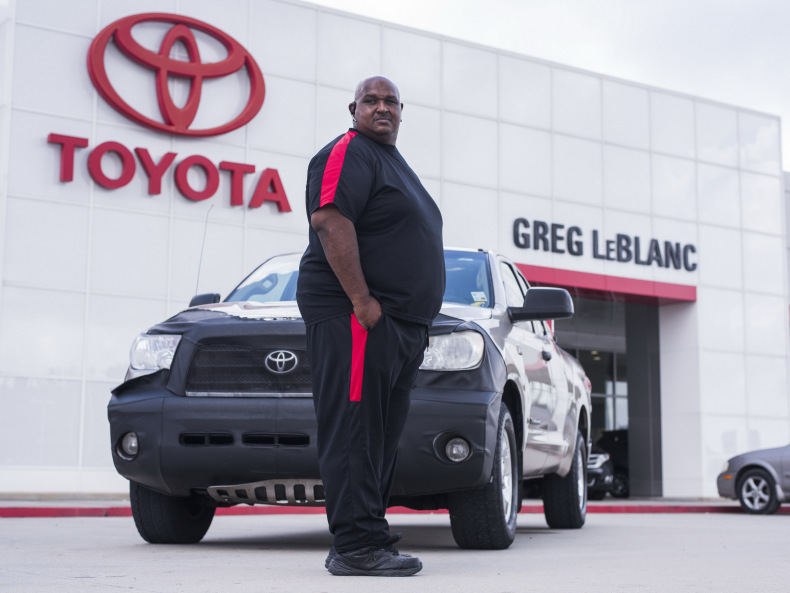Q
Which is bigger? Toyota Tacoma or Tundra?
The Toyota Tundra is larger than the Tacoma. Although both pickup trucks are manufactured by Toyota, they are positioned differently and have significant differences in size. The Tundra is a full-size truck, whereas the Tacoma is a midsize pickup. The Tundra can reach up to approximately 6.4 meters in length with a wheelbase of around 3.8 meters, providing more spacious seating and greater cargo bed capacity, making it ideal for demanding towing and payload needs. In contrast, the Tacoma measures up to about 5.8 meters in length with a wheelbase of approximately 3.7 meters, resulting in a more maneuverable vehicle better suited for city driving and daily use. In the Malaysian market, where full-size pickups are less common, the Tacoma's dimensions are likely a better fit for local road and parking conditions. However, if you require superior towing and payload capacity along with maximum interior space, the Tundra would be the more suitable choice. Both models are renowned for their reliability and durability, catering effectively to different user requirements.
Special Disclaimer: This content is published by users and does not represent the views or position of PCauto.
Related Q&A
Q
How many litres is a Toyota Tundra fuel tank?
The fuel tank capacity of the Toyota Tundra varies depending on different years and configurations. The latest models usually come with a large-capacity fuel tank of about 32.2 gallons (approximately 122 liters), which is suitable for long-distance driving or heavy load requirements. This design is quite common among pickup truck models, as it can reduce the frequency of refueling and enhance practicality. For users in Malaysia, although the Tundra is not a mainstream local model, its fuel tank capacity matches its powerful V6 or V8 engine, ensuring sufficient driving range, especially suitable for scenarios that require frequent long-distance driving or off - roading.
It should be noted that the fuel tank capacity may vary slightly depending on specific models (such as SR5, Limited, or TRD Pro versions) or market configurations. It is recommended to check the official specifications or consult the dealer before purchasing a vehicle to obtain accurate information. In addition, while a large fuel tank is convenient, it also increases the overall vehicle weight, which may slightly affect the fuel consumption performance. Therefore, in daily use, one needs to balance the actual needs with fuel economy.
Q
How long will a Toyota Tundra Hybrid battery last?
The hybrid battery life of the Toyota Tundra Hybrid typically ranges from 10 to 15 years, depending on usage conditions and maintenance. The tropical climate in Malaysia may have a certain impact on the battery life. However, Toyota's hybrid battery design has taken into account the adaptability to high-temperature environments. So, as long as regular maintenance is carried out, the battery performance can be maintained for a long time.
To extend the battery life, it is recommended to avoid exposing the vehicle to extreme high temperatures for a long time, regularly check the battery cooling system, and keep the battery in an appropriate charging state. The cost of replacing the hybrid battery is relatively high, but Toyota offers a battery warranty for up to 8 years or 100,000 miles (about 160,000 kilometers), which provides additional protection for car owners.
In addition, the advantages of hybrid technology lie in its fuel economy and environmental performance. For Malaysian car owners, this can not only save fuel costs but also reduce carbon emissions, which is in line with the global environmental protection trend. If you have more questions about hybrid technology, you can consult your local Toyota dealer, and they can provide more detailed maintenance advice and technical support.
Q
How many litres per 100km does a Toyota Tundra Hybrid use?
As a full-sized hybrid pickup truck, the fuel consumption of the Toyota Tundra Hybrid varies depending on specific driving conditions and configurations. The official data shows that its combined fuel consumption is approximately between 9.8 and 10.7 liters per 100 kilometers, which is a significant improvement compared to the traditional fuel-powered Tundra (about 13-15 liters per 100 kilometers). This is thanks to its hybrid system consisting of a 3.5-liter V6 twin-turbocharged engine and an electric motor, which can provide strong power while also taking fuel economy into account.
For Malaysian users, although the Tundra Hybrid has not been officially launched in the local market, the fuel consumption performance and hybrid technology of this vehicle are worth paying attention to. Especially considering the fluctuating oil prices and the increasing environmental awareness in Malaysia, hybrid vehicles may become a practical choice in the future.
It should be noted that the actual fuel consumption is affected by the load, road conditions, and driving habits. For example, frequent acceleration or high-speed driving may result in a fuel consumption close to 12 liters per 100 kilometers, while smooth driving or urban commuting may lead to a consumption of less than 10 liters per 100 kilometers. If Malaysian consumers are interested in hybrid pickups, they can also refer to the fuel consumption data of similar models such as the Ford F-150 Hybrid (about 9-11 liters per 100 kilometers) for a horizontal comparison.
Q
Is the Toyota Tundra a hybrid or non hybrid?
The Toyota Tundra currently offers both Hybrid and Non - Hybrid versions, depending on the model year and configuration. For example, the third - generation Tundra launched in 2022 first introduced the i - FORCE MAX hybrid system. It combines a 3.5 - liter V6 twin - turbocharged engine with an electric motor, capable of outputting 437 horsepower and 790 N·m of torque, significantly improving fuel economy and power performance. In contrast, the non - hybrid version still uses a traditional fuel engine.
For Malaysian consumers, hybrid models can balance performance and energy - saving during long - distance driving or when there are heavy - load requirements. However, it's necessary to check whether the relevant versions are introduced in the local market, as the vehicle configurations in Southeast Asian regions may be adjusted according to market demand. Hybrid technology has become a global trend for pickups. Competitors like the Ford F - 150 Lightning have also launched electrified options. It is recommended to consult local dealers to confirm the latest specifications before purchasing a car. At the same time, you can compare the differences in hybrid technologies among different brands. For instance, Toyota's THS system is well - known for its maturity and reliability, making it suitable for users who value durability.
Q
What caused the Toyota Tundra engine failure?
Engine failures in the Toyota Tundra can be caused by a variety of factors, including improper maintenance, oil - related issues, or cooling system malfunctions. For example, failing to change the oil for an extended period may result in insufficient lubrication, which can lead to internal engine wear. In Malaysia's hot and humid climate, inadequate maintenance of the cooling system can also cause the engine to overheat. Additionally, fuel quality and sensor malfunctions can affect the engine's performance.
For large - displacement vehicles like the Tundra, regular maintenance is particularly crucial. It is recommended that owners follow the manufacturer's maintenance manual, use the appropriate grade of oil and fuel, and regularly check components such as coolant and belts. Malaysian owners also need to be aware of the impact of the high - temperature and rainy environment on the engine. For instance, moisture can cause electrical circuit problems, and during high - load driving (such as towing heavy objects), it is essential to ensure that the cooling system is working properly. If you notice abnormal engine noises, a decrease in power, or warning lights on the dashboard, you should have the vehicle inspected and repaired promptly to prevent further damage.
Q
Is the Toyota Tundra a reliable car?
As a full-sized pickup truck targeting the North American market, the Toyota Tundra has a good reputation for reliability. Its body-on-frame structure and well-established V6/V8 powertrain have been long-term market-tested, showing stable performance in terms of durability. It's especially suitable for some users in Malaysia who need to deal with rough terrains or heavy-load requirements.
The Tundra is equipped with a high-strength steel chassis and an optimized suspension system, which can well adapt to the diverse road conditions in Malaysia. However, it should be noted that due to its large body size, it may take some time to get used to driving it on the narrow urban roads in Malaysia.
The maintenance of the Tundra is relatively convenient under Toyota's global service system. But as an imported model, the parts supply cycle and cost may be slightly higher than those of locally assembled models.
For Malaysian consumers considering buying a full-sized pickup truck, apart from reliability, they should also take into account the actual usage scenarios. For example, whether they need to frequently enter and exit underground parking lots or narrow streets, as well as the local tax policies for large vehicles. These factors will all affect the actual usage experience.
Q
Who Produces Toyota Tundra Engines?
The engines of the Toyota Tundra are mainly designed and manufactured by Toyota Motor Corporation itself. Its production base is located at the Huntsville plant in Alabama, USA. This plant specializes in producing V6 and V8 engines for large pick-up trucks and SUVs like the Tundra. These engines are well-known for their reliability and durability, and are particularly suitable for the multi-terrain and climate conditions in Malaysia. Toyota's continuous innovation in engine technology, such as the adoption of the Dual Variable Valve Timing-intelligent (VVT-i) system and direct injection technology, not only improves fuel efficiency but also reduces emissions, which is in line with the global environmental protection trend. For Malaysian consumers, understanding the manufacturing background and technical features of the Tundra's engine can help them make a wiser decision when purchasing a large pick-up truck. Meanwhile, Toyota's local after-sales service network can also provide reliable support for vehicle owners, ensuring that the vehicles remain in good running condition over the long term.
Q
Is the Toyota Tundra turbocharged?
The Toyota Tundra currently offers two types of powertrain options: naturally aspirated and turbocharged, depending on the model year and configuration. For example, the third - generation Tundra launched in 2022 introduced a 3.5 - liter V6 twin - turbocharged engine (i - FORCE MAX hybrid system) for the first time, replacing the old 5.7 - liter V8 naturally aspirated engine. This turbocharged engine can output 437 horsepower and 790 N·m of torque, balancing both power performance and fuel economy.
For Malaysian consumers, the application of turbocharging technology in large - displacement pickups is becoming more and more common. This type of engine can provide stronger torque at low speeds, which is especially suitable for load - carrying or towing needs. It can also adapt to the local hot climate because modern turbo systems usually come with efficient cooling solutions.
It should be noted that the configurations of the Tundra may vary in different markets. It is recommended to confirm the specific specifications through the official channels of Toyota in Malaysia. In addition, regular maintenance of turbocharged vehicles (such as oil changes and cooling system inspections) is crucial for maintaining performance. This kind of knowledge is very valuable for Malaysian consumers considering buying high - performance pickups.
Q
How long do Toyota tundras last?
The Toyota Tundra is renowned for its excellent durability and reliability. Under normal maintenance conditions, it can usually travel between 300,000 and 500,000 kilometers or even more. The specific lifespan depends on factors such as driving habits, road conditions, and maintenance frequency. For users in Malaysia, the hot and humid climate may have a certain impact on vehicle components like rubber seals and electronic systems. However, as long as you regularly change the engine oil, check the cooling system, and promptly address minor issues, the durability of the Tundra can still be guaranteed. The V8 engine and sturdy frame design of this vehicle also provide a solid foundation for its long - term use. It's worth mentioning that Toyota has a relatively well - established after - sales service network in Malaysia, and there is an abundant supply of original parts, which strongly supports the long - term use of the Tundra. If you're considering buying a used Tundra, it is recommended to focus on checking the engine condition, chassis rust, and maintenance records. Usually, a well - maintained used car can still offer reliable performance. Overall, the Tundra is a durable pickup truck suitable for Malaysian road conditions.
Q
Is the Toyota Tundra petrol or diesel?
Currently, the Toyota Tundra mainly offers gasoline engine versions in the Malaysian market. Specifically, it is equipped with a 3.5 - liter V6 twin - turbocharged gasoline engine (code - named V35A - FTS), which belongs to the Toyota Dynamic Force series and is paired with a 10 - speed automatic transmission. This powertrain focuses on the balance between high performance and low fuel consumption. Although the Tundra once had a diesel version in the North American market (such as the 5.7 - liter V8 diesel engine launched in 2008), the current models no longer offer the diesel option. For Malaysian consumers, the gasoline - powered Tundra is more suitable for the local usage environment, as the gas station network in Malaysia is mainly for gasoline, and diesel vehicles have to face higher road taxes and maintenance costs.
It's worth mentioning that in recent years, Toyota has gradually reduced the R & D of diesel passenger cars globally and shifted its focus to hybrid and hydrogen energy technologies. For example, the Camry and Corolla Cross available in Malaysia already offer hybrid versions. If users need a diesel pickup with stronger torque, they can consider the locally assembled Toyota Hilux. Its 2.4 - liter and 2.8 - liter diesel engines perform better in load - carrying and off - road scenarios.
Latest Q&A
Q
How much is insurance for a BMW M5 2025?
The insurance cost for the 2025 BMW M5 varies depending on individual circumstances and insurance company policies, typically ranging from RM15,000 to RM30,000 per year. The specific amount depends on factors such as the vehicle's purchase price, engine displacement, the owner's age, driving record, and the type of insurance selected. High-performance cars like the M5 have higher insurance premiums mainly because their repair costs are expensive and they have powerful engines, leading insurance companies to assess higher risks. Comprehensive Insurance is the most common choice, covering theft, accidents, and third-party liability, while Third-Party Insurance is cheaper but has limited coverage. It is advisable for car owners to compare quotes from several companies before purchasing insurance and consider increasing the No-Claims Discount (NCD) to reduce premiums. Additionally, installing tracking devices or taking defensive driving courses may also help lower insurance costs. Insurance costs for high-performance cars are generally high, so budget planning should be done before buying the car to ensure long-term vehicle maintenance costs are affordable.
Q
How fast is the M5 2025?
The 2025 BMW M5 is a high-performance sedan that really delivers on power. It's packing a plug-in hybrid setup with a 4.4-liter V8 twin-turbo engine and an electric motor, churning out a combined output of over 718 horsepower. It'll hit 0-100 km/h in around 3.3 seconds, and while the top speed is electronically limited to 250 km/h,ticking the M Driver's Package bumps that up to 305 km/h. But it's not just about straight-line speed—this thing handles like a dream too. With the M xDrive all-wheel-drive system, active differential, and adaptive suspension, it stays rock-solid even when you're pushing it hard. For folks who love high-performance cars, the M5's hybrid system is a win-win: it boosts power while also offering some fuel efficiency, especially in the city where electric-only mode cuts down on emissions. Inside, it's loaded with tech, featuring the latest iDrive system and advanced driver assistance features, perfect for owners who want a mix of speed and cutting-edge tech. And if you're craving even more extreme performance, keep an eye out for the upcoming M5 CS version, which is expected to get lighter and even more powerful.
Q
Is the 2025 M5 electric or gas?
The 2025 BMW M5 will feature a plug-in hybrid system, combining a 4.4-liter V8 twin-turbo engine with an electric motor, delivering a combined output expected to exceed 700 horsepower. It retains the driving excitement of traditional high-performance gasoline cars while incorporating the environmental benefits of new energy technology. This powertrain configuration is becoming an increasing trend in the high-performance car segment, with models like the Porsche Panamera Turbo S E-Hybrid also adopting hybrid setups. For car owners who value performance but also want to try new energy, it's a solid choice. Currently, many brands are applying hybrid technology to their high-performance models, which not only boosts power performance but also reduces emissions. These models typically support short-distance all-electric commuting, making daily use more economical, while retaining the convenience of gasoline-powered long-distance driving. The future high-performance car market will likely see more innovations in similar powertrains.
Q
What size engine is in the 2025 M5?
The 2025 BMW M5 is expected to feature a plug-in hybrid system combining a 4.4-liter V8 twin-turbo engine with an electric motor, boasting a combined output likely exceeding 700 horsepower and torque potentially breaking 800 Nm. This powertrain not only carries forward the M5's legacy of high performance but also improves fuel efficiency through electrification. Notably, this marks the first time the M5 has adopted a hybrid system, signaling the shift toward new energy in high-performance sedans—a trend mirrored in competitors like the Mercedes-AMG E63. For drivers who love behind-the-wheel thrills, the hybrid setup delivers more immediate torque response, while the electric motor should make low-speed acceleration feel sharper. These high-performance hybrid systems typically come with sophisticated all-wheel drive and adjustable suspension, ready to tackle everything from daily commutes to track days. If you're eyeing this class of performance cars, it's worth test-driving to feel the difference between hybrid and traditional gas-powered models—after all, the power delivery smoothness and exhaust note character will vary.
Q
How is the 2025 M5 different from the last M5?
The 2025 M5 gets some serious upgrades over the previous generation, especially in the powertrain and electrification departments. The biggest change? It's the first time we're seeing a plug-in hybrid setup under the hood. Pairing that 4.4-liter twin-turbo V8 with an electric motor, the total output is expected to hit 718 horsepower – that's around 100 horses more than the old gas-only model. And with an electric-only range of 60-80 kilometers, it's actually pretty practical for daily short commutes now.
On the chassis front, adaptive suspension and four-wheel steering come standard, making it even more nimble. Yeah, the battery pack adds about 200 kilos to the curb weight, but they've tried to offset that with lightweight bits like the carbon fiber roof. Inside, there's a new curved dual-screen setup and iDrive 8.5, plus a dedicated interface for the hybrid modes.
Outside, the bigger kidney grille and sharper laser headlights are dead giveaways, and the rear diffuser's been redesigned to smooth out the aerodynamics. What really matters here is that this marks the M5's first step into electrification in its 37-year history. Sure, it's heavier, but the torque vectoring and smarter all-wheel-drive system actually make it better on the track. Balancing performance with eco-friendliness like this feels like the way forward for high-performance cars, and we're already seeing similar tech pop up in new models from some competitors.
View MoreRelated News

Toyota Tundra Owner Achieves the Second Million-Mile Milestone
LienApr 18, 2025

Toyota is developing two new Land Cruiser models, will Land Cruiser become an independent brand in the future?
JamesNov 20, 2025

Toyota Supra (A90) will be discontinued next March, and the next generation model may be led by Toyota.
JohnNov 14, 2025

Which one is better, Honda City or Toyota Vios?
AshleyNov 11, 2025

2026 Toyota Hilux Travo released, the brand-new exterior and interior are highly anticipated
LienNov 11, 2025
View More


















Pros
Cons